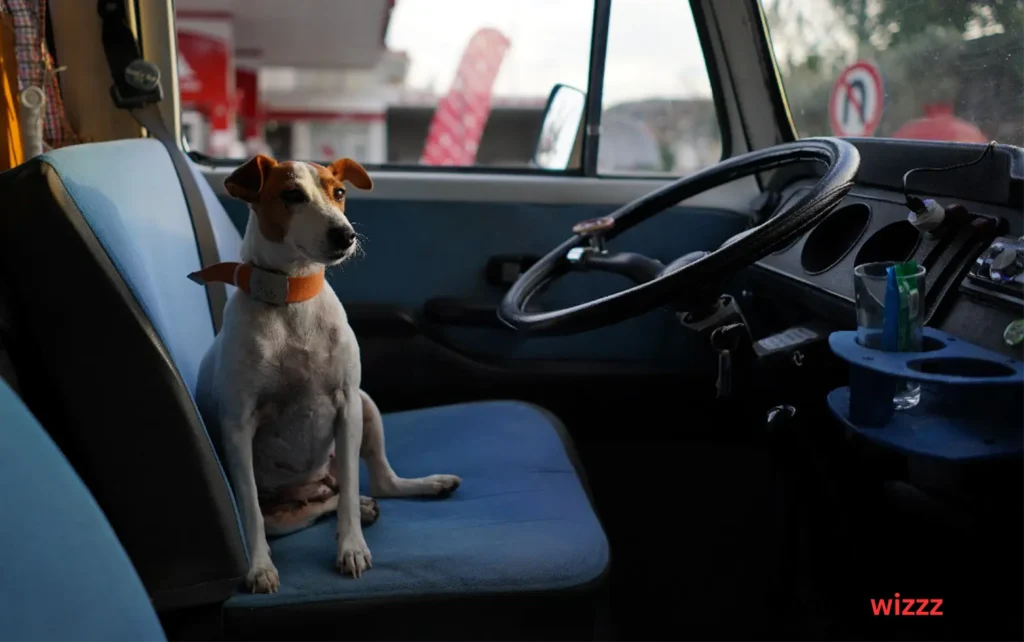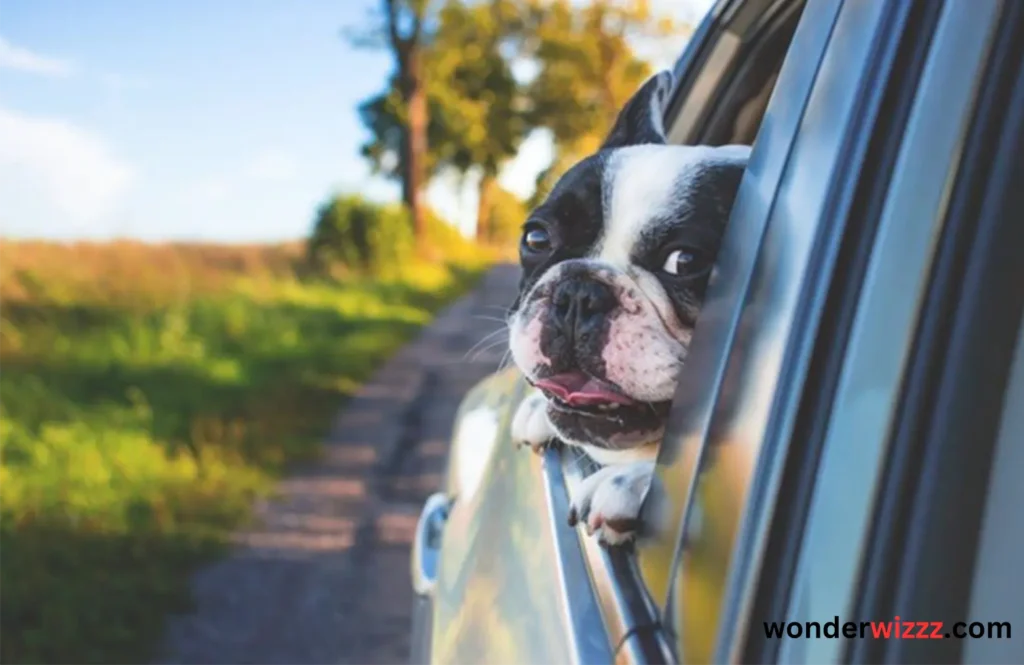What are the top safety measures for traveling with pets?

Introduction
Traveling with pets is not just about fun; it’s also about keeping them safe. Pets are like family, so their safety matters a lot when we’re on the go. Bringing our furry friends along on trips can make the journey more enjoyable for everyone. Now, let’s delve into the essential safety measures to ensure our pets stay secure during travel.
A. Importance of Ensuring Pet Safety During Travel
Making sure our pets are safe during travel is super important. Imagine if they got hurt or lost while we were on a trip. That would be scary and sad for us and for them too. Therefore, ensuring their safety remains our utmost concern.
B. Overview of the Benefits of Traveling with Pets
Traveling with pets can be so much fun! Wherever they go, they spread happiness and companionship. Plus, having them around can make us feel less lonely and stressed during long journeys. So, it’s not just about us enjoying the trip; it’s also about them having a good time.
C. Introduction to the Top Safety Measures for Traveling with Pets
Now, let’s talk about how we can keep our pets safe while traveling. We’ll learn about things like using secure carriers, keeping them hydrated, and giving them breaks during long trips. These safety measures will help ensure that our furry friends stay happy and healthy wherever we go.

Choosing the Right Transportation Method
When we’re taking our furry friends on a trip, we need to think about how we’re going to get there safely. Different types of transportation, like cars, planes, and trains, have their pros and cons when it comes to traveling with pets.
A. Evaluating Different Transportation Options
First, we need to look at all the different ways we can travel. Some people might drive in a car, while others might fly in a plane or take a train. Each option has its own set of things to consider when bringing along a pet.
B. Selecting the Most Suitable Mode of Transportation for Your Pet
Once we’ve looked at all the options, we need to pick the one that’s best for our pet. For example, if our pet gets anxious easily, a long plane ride might not be the best choice. We have to think about what will make them feel safe and comfortable.
C. Understanding the Specific Requirements and Regulations for Each Mode of Transport
Lastly, it’s important to know the rules and regulations for traveling with pets on each type of transportation. Some places might require certain vaccinations or paperwork for pets to travel, so we need to be prepared and make sure everything is in order before we go. By understanding these requirements, we can ensure a smooth and safe journey for our furry friends.

Preparing Your Pet for Travel
Before we hit the road or take to the skies with our furry pals, it’s crucial to get them ready for the journey ahead. This involves some important steps to ensure they’re healthy, safe, and comfortable during travel.
A. Visit to the Veterinarian for a Health Check-Up and Necessary Vaccinations
First things first, we need to take our pet to the vet for a check-up. The vet will make sure our pet is healthy enough for travel and might give them any needed vaccinations to keep them safe from diseases they could encounter on the trip.
B. Obtaining Required Documentation and Identification Tags
Next, we have to gather all the necessary paperwork for our pet. This might include things like health certificates and ID tags with our contact information. These documents are important in case our pet gets lost or needs medical attention while we’re traveling.
C. Training and Acclimatizing Your Pet to the Travel Carrier or Crate
Lastly, we need to help our pets get used to their carrier or crate. This might involve gradually introducing them to it at home and rewarding them for going inside. By making their career a familiar and comfortable space, we can reduce their stress during travel and make the journey safer for everyone involved.

Safety Measures During Transit
When we’re on the move with our furry companions, it’s crucial to make sure they stay safe and comfortable throughout the journey. Here are some important safety measures to keep in mind while we’re in transit.
A. Securing Your Pet Properly in the Vehicle or Carrier
One of the most important things is to make sure our pet is securely fastened in the vehicle or carrier. This could mean using a seatbelt harness for dogs or making sure the carrier is securely strapped in. This keeps them from getting injured if there’s a sudden stop or accident.
B. Ensuring Proper Ventilation and Temperature Control
We also need to make sure our pet has plenty of fresh air and that the temperature is just right. In a car, we can crack a window or turn on the air conditioning if it’s hot. In a carrier, we can make sure there are plenty of ventilation holes. This helps prevent our pet from getting too hot or suffocating.
C. Providing Food, Water, and Bathroom Breaks as Needed During Long Journeys
During long trips, it’s important to take breaks to let our pets eat, drink, and go to the bathroom. Just like us, they need regular food and water to stay hydrated and energized. By stopping every few hours, we can make sure they’re comfortable and healthy throughout the journey.

Accommodation and Lodging
Finding the right place to stay with our pets is super important for their safety and comfort during our trip. Here are some things to consider when choosing accommodation for our furry friends.
A. Researching Pet-Friendly Accommodations in Advance
Before we hit the road, it’s smart to look for places that welcome pets. Not all hotels or rental homes allow animals, so we need to do some research to find ones that do. This way, we won’t have any surprises when we arrive.
B. Understanding Hotel Policies and Restrictions Regarding Pets
Once we’ve found a pet-friendly place to stay, it’s important to understand the rules. Some hotels might have size or breed restrictions, or they might charge extra fees for pets. By knowing the policies in advance, we can avoid any problems or misunderstandings.
C. Creating a Comfortable and Safe Space for Your Pet in the Accommodation
Finally, when we arrive at our accommodation, we want to make sure our pet feels at home. This could mean bringing their favorite bed or toys, setting up a cozy corner for them to relax in, and making sure there are no hazards they could get into. By creating a comfortable and safe space, we can ensure that our pet enjoys their stay just as much as we do.
Safety Gear and Accessories
Having the right gear and supplies can make a big difference in keeping our pets safe while traveling. Here are some important things to consider packing before hitting the road.
A. Investing in Essential Safety Gear Such as Harnesses, Seat Belts, or Carriers
When traveling by car, it’s essential to have the right gear to keep our pets secure. This could mean using a harness that attaches to the seatbelt or putting them in a carrier that’s strapped in. These measures prevent them from getting injured if there’s a sudden stop or accident.
B. Packing Emergency Supplies Including First Aid Kits and Medications
Just like us, pets can get hurt or sick while traveling. That’s why it’s important to pack a first aid kit with supplies like bandages, antiseptic, and tweezers. We should also bring any medications our pet might need, along with a copy of their medical records in case we need to visit a vet while we’re away.
C. Using GPS Trackers or Microchips for Added Security in Case of Emergencies
In case our pet gets lost or wanders off during our trip, it’s helpful to have a way to track them down. GPS trackers attach to their collars and allow us to see their location in real-time. Microchips, on the other hand, are implanted under their skin and contain our contact information, so if they’re found, we can be contacted and reunited with them quickly. These extra security measures give us peace of mind and ensure our pet’s safety no matter where we go.
Environmental Considerations
The environment around us can affect our pets, so it’s important to be mindful of potential dangers and changes in climate when we travel with them. Here’s how to keep them safe in different environments.
A. Being Aware of Potential Hazards in Different Travel Destinations
Every place we visit has its own set of hazards for pets. This could include things like poisonous plants, wild animals, or busy roads. By researching our destination in advance, we can identify potential risks and take steps to avoid them.
B. Adapting to Changes in Climate and Terrain During Travel
As we travel, we might encounter different climates and terrains that our pets aren’t used to. For example, they might not be prepared for hot weather if they’re used to cooler temperatures at home. It’s important to help them adjust by providing shade, water, and breaks as needed.
C. Taking Precautions to Protect Your Pet from Environmental Dangers Such as Extreme Heat or Cold
Extreme temperatures can be dangerous for pets, so we need to take precautions to keep them safe. This could mean avoiding outdoor activities during the hottest part of the day or dressing them in warm coats and booties in cold weather. By being proactive, we can ensure our pets stay comfortable and healthy no matter where our travels take us.
Emergency Preparedness
Being ready for emergencies is crucial when we travel with our pets. Here’s how to make sure we’re prepared for any unexpected situations.
A. Familiarizing Yourself with Emergency Veterinary Services Along Your Travel Route
It’s important to know where the nearest vet clinics are along our travel route. In case our pet gets sick or injured, we can quickly find help. This can make a big difference in getting them the care they need fast.
B. Having a Contingency Plan in Case of Unexpected Events or Emergencies
Sometimes things don’t go as planned when we’re on the road. That’s why it’s smart to have a backup plan in case of emergencies. This could include having extra supplies on hand, knowing alternative routes, or having a list of pet-friendly accommodations nearby.
C. Knowing How to Administer Basic First Aid to Your Pet if Necessary
In an emergency, knowing how to give basic first aid to our pets can save their lives. This might include things like cleaning wounds, applying bandages, or performing CPR. Taking a pet first aid course or having a reference guide on hand can help us feel more confident in caring for our furry friends during emergencies.
Conclusion
As we wrap up our discussion on traveling with pets safely, let’s take a moment to revisit the key points and reflect on the joys of exploring with our furry companions.
A. Recap of the Importance of Prioritizing Pet Safety During Travel
Throughout our journey, we’ve emphasized how crucial it is to keep our pets safe. Whether it’s securing them in the car, preparing for emergencies, or considering their comfort, their safety should always come first.
B. Encouragement for Pet Owners to Implement the Outlined Safety Measures
Now that we’ve learned about various safety measures, let’s encourage each other to put them into action. By taking proactive steps to protect our pets, we can ensure they have a happy and healthy travel experience.
C. Final Thoughts on the Joys and Rewards of Traveling with Pets Safely
Traveling with pets is not just about safety; it’s also about creating lasting memories and strengthening the bond between us. Despite the challenges, the joy of exploring new places together and the love and companionship they provide make it all worthwhile. So, let’s continue to journey safely with our beloved pets by our side.
People also ask
How do you transport a pet safely?
Use a secure carrier or harness in the vehicle.
How do you manage pets when traveling?
Keep them comfortable, and hydrated, and take regular breaks.
What is the safest way for a pet to travel in a car?
Secure them with a seat belt harness or in a carrier.
What are the safety rules with animals?
Keep them restrained in the vehicle and follow pet-friendly accommodation policies.
How do you travel full-time with pets?
Plan, research pet-friendly places, and prioritize their safety and comfort.
What is the best way to travel long-distance with a dog?
Break up the journey, keep them hydrated, and provide comfort breaks.



